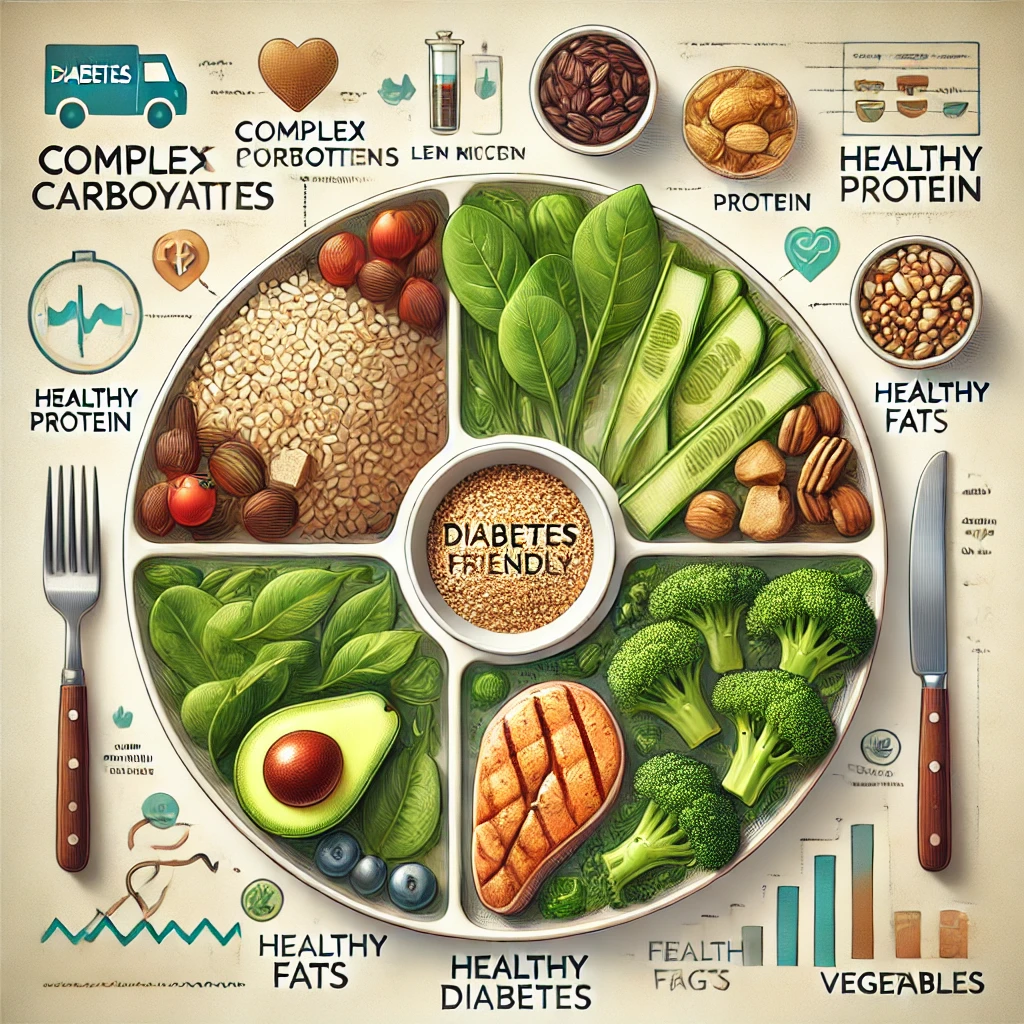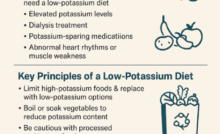Healthy Eating Series for Diabetes Patients 1


Basic Principles of a Diabetes Diet
Managing Carbohydrates
Balancing Protein Intake
Choosing Healthy Fats
Maintaining a Regular Meal Pattern
Reducing Sugar and Sodium Intake
The key to managing diabetes is keeping blood sugar levels stable. One of the most important factors in achieving this is dietary management. This article outlines the fundamental principles and practical guidelines for maintaining a healthy diet for diabetes patients.
1. Basic Principles of a Diabetes Diet
1) Managing Carbohydrates
- Choose Complex Carbohydrates: Opt for whole grains, brown rice, oats, and legumes instead of refined carbohydrates (white rice, white bread, sugar).
- Increase Dietary Fiber: Fiber helps slow blood sugar spikes and increases satiety, so consume plenty of vegetables, fruits, and nuts.
- Select Low-GI Foods: Choose sweet potatoes over white potatoes and brown rice over white rice to prevent blood sugar surges.
2) Balancing Protein Intake
- Consume Lean Proteins: Choose healthy proteins like chicken breast, fish, tofu, legumes, and eggs.
- Reduce Saturated Fats: Prefer fish and plant-based proteins over red meat and processed meats.
3) Choosing Healthy Fats
- Incorporate Unsaturated Fats: Eat nuts, olive oil, and avocados for healthy fat intake.
- Avoid Trans and Saturated Fats: Fast food, fried foods, and margarine can negatively impact blood sugar control.
4) Maintaining a Regular Meal Pattern
- Eat Small, Frequent Meals: Consume three main meals and 2–3 snacks at consistent times throughout the day.
- Always Have Breakfast: Skipping breakfast can lead to unstable blood sugar levels, so be sure to eat a morning meal.
5) Reducing Sugar and Sodium Intake
- Avoid Processed Foods: Packaged foods high in salt, sugar, and artificial sweeteners can interfere with blood sugar management.
- Use Natural Seasonings: Enhance flavors with herbs and spices instead of excess salt and sugar.
2. Meal Guide for Diabetes Patients
(1) Sample Daily Meal Plan
Breakfast
✅ 1/2 bowl brown rice + grilled tofu + vegetable side dishes + low-sodium soup ✅ Oatmeal with nuts + unsweetened yogurt
Lunch
✅ 1/2 bowl brown rice + grilled fish + vegetable side dishes + kimchi ✅ Chicken breast salad with olive oil dressing + whole wheat bread
Dinner
✅ 1/2 bowl mixed grains + grilled chicken breast + steamed broccoli + miso soup ✅ Tofu salad with nuts + low-fat dressing
Snacks
✅ A handful of nuts + unsweetened Greek yogurt ✅ Cherry tomatoes + one boiled egg
3. Practical Tips for a Diabetes Diet
✔ Keep a Food Journal: Track daily food intake and monitor blood sugar changes.
✔ Check Food Labels: Pay close attention to carbohydrate, sugar, and sodium content.
✔ Make Smart Choices When Dining Out: Opt for grilled over fried foods and whole grains over refined grains.
✔ Increase Water Intake: Drink 6–8 glasses of water daily to support metabolism.
✔ Incorporate Exercise: Engage in walking, yoga, or light strength training for better blood sugar management.
✔ Manage Stress: Stress can raise blood sugar levels, so practice meditation or hobbies for relaxation.
✔ Get Regular Health Checkups: Monitor blood sugar, cholesterol, and blood pressure levels.
Conclusion
The key to managing diabetes is maintaining a balanced diet consistently. Making the right food choices and following a structured meal routine can help regulate blood sugar levels and reduce the risk of complications. Additionally, lifestyle improvements, including regular exercise, proper sleep, and stress management, should also be considered.
Continuous effort is essential, and in the next series, we will cover more detailed dietary adjustments and recipes! Start your journey to a healthier diet today!
References
- American Diabetes Association. (2023). “Diabetes Meal Planning.” Retrieved from https://www.diabetes.org/healthy-living/recipes-nutrition
- Mayo Clinic. (2023). “Diabetes diet: Create your healthy-eating plan.” Retrieved from https://www.mayoclinic.org/healthy-lifestyle/nutrition-and-healthy-eating/in-depth/diabetes-diet/art-20044295
Sodium Bicarbonate Supplementation for Chronic Kidney Disease: Can It Help Preserve Muscle?
Recent Posts
How to Read Your Blood Test Results: A Guide for Kidney Disease Management
When managing chronic kidney disease (CKD), regular blood tests are essential. Blood test results help…
How to Follow a Low-Potassium Diet?
Potassium is an essential mineral that helps regulate heart function and muscle contractions. However, for…
How Can Kidney Disease Patients Exercise Safely in the Summer?
Summer’s high temperatures and humidity significantly increase the risk of dehydration and heat-related illnesses during…
5 Essential Principles for Accurate Blood Pressure Measurement – Including Real-Life Cases and Nighttime Hypertension
Why Is Accurate Blood Pressure Measurement Important? Blood pressure (BP) is a vital, dynamic health…
Hypertension: The Silent Killer That Destroys Your Kidneys
Introduction Hypertension is often called the “silent killer.” Without obvious symptoms, it gradually damages major…
A Gene-Edited Pig Kidney in a Human — A Medical Miracle Becomes Reality
🐷 A Pig’s Kidney in a Human Body? Sounds like science fiction — but in…
